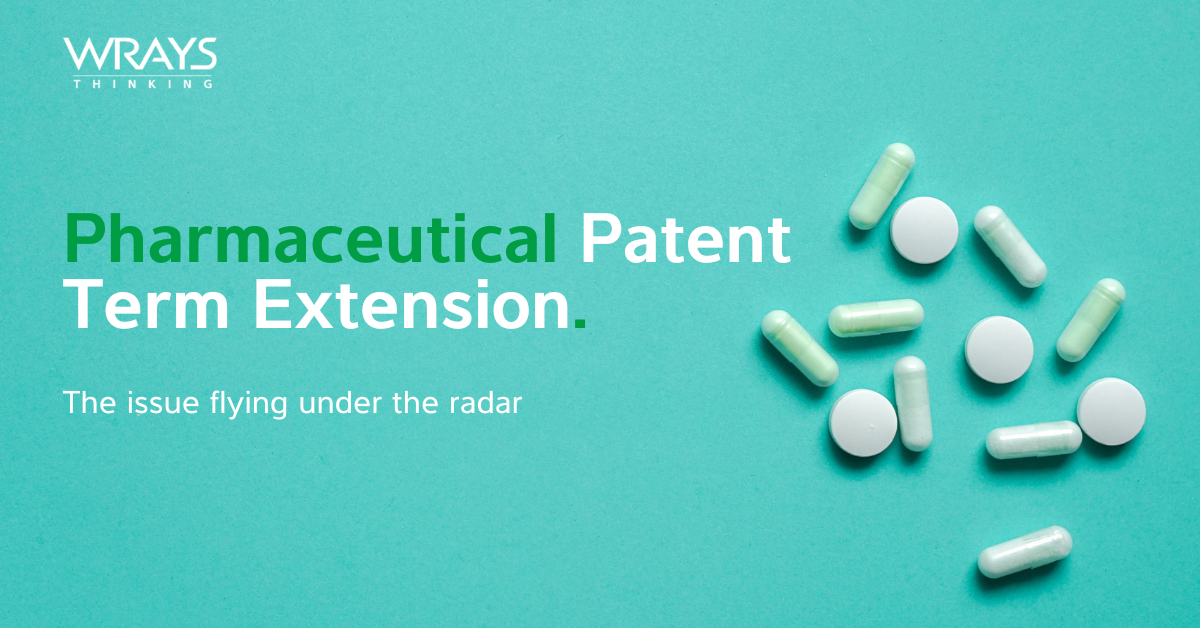The Issue Flying Under the Radar
Australian patent law provides for extensions of term of up to 5 years, beyond the standard 20-year term, for patents directed to pharmaceutical inventions.
The legal requirements for obtaining a pharmaceutical patent term extension (PTE) as stated in the Australian Patents Act 1990 are as follows:
- The patent must relate to a pharmaceutical substance per se or a pharmaceutical substance when produced by recombinant DNA technology. The substance must be disclosed in the specification and must fall within the scope of the claims.
- The substance must be included on the Australian Register of Therapeutic Goods (ARTG) before the 20-year term of the patent expires and the entry must be current at the time of the application for an extension. The first inclusion on the Register is relevant and may be either a “listing” for export from Australia, or a “registration” for marketing approval within Australia.
- At least five years must have elapsed between the effective filing date of the patent application and the first inclusion of the pharmaceutical substance on the ARTG.
On the radar: Earliest regulatory approval date reigns supreme
Recently, two decisions of the Full Court of the Federal Court in Commissioner of Patents v Ono Pharmaceutical Co. Ltd [2022] FCAFC 39 and Merck Sharp & Dohme Corp. v Sandoz Pty Ltd [2022] FCAFC 40 confirmed that when a claim covers two or more pharmaceutical substances having different ARTG approval dates, the PTE request must be based on the earliest ARTG approved pharmaceutical substance. This applies even if the earliest ARTG approval date relates to a competitor product or the approval occurred less than 5 years after the date of the patent, thus rendering the patent ineligible for a term extension. An important practical implication from these decisions is that if a patent application includes claims covering two or more pharmaceutical substances, each of the pharmaceuticals should be pursued in separate applications. This may necessitate the filing of one or more divisional applications during prosecution.
Under the radar, “for use” and “pharmaceutical substance per se”
The PTE eligibility requirement that a patent claim a pharmaceutical substance per se was brought into sharp focus by the decision in Biogen International GmbH v Pharmacor Pty Ltd [2021] FCA 1591 (the Biogen decision). Biogen sought an interlocutory injunction to restrain Pharmacor from selling a product that Pharmacor acknowledged infringed Biogen’s patent. Under the relevant Australian law, one of the considerations for obtaining an interlocutory injunction is the need to demonstrate a prima facie case of infringement. However, Biogen was unable to successfully do this based on a disputed PTE.
The Biogen patent received a 5-year extension of term to 29 October 2024. However, Pharmacor claimed that the PTE was not validly granted because the relevant claims did not define a pharmaceutical substance per se and, as such, Biogen’s patent should have expired. Specifically, the claims relied on for the PTE request were EPC2000 claims in the format “Substance X for use in the treatment of disease Y”. Pharmacor submitted that the term “for use” results in a purpose limited claim that does not define a pharmaceutical substance per se. Ultimately, based on what was disclosed in the specification as a whole, Rofe J took a “provisional view that there is a sufficiently strong prospect that the extension of the Patent may have been wrongly granted” [139]. On this basis, the interlocutory injunction was not granted.
The Biogen decision seemingly conflicts with current Patent Office practice. Typically, when considering claims, the Australian Patent Office interprets the term “for” as not limiting. As such, a claim directed to a pharmaceutical substance for use in a method of treatment is routinely construed by Patent Examiners as being directed to a pharmaceutical per se suitable for, but not limited to, the defined method. Notwithstanding, the IP Australia Patent Manual of Practice and Procedure provides examples of claims that are not directed to pharmaceutical substances per se, and this includes “a pharmaceutical substance for use”.
The “for use” issue seems to have been made murkier by the recent granting of a PTE for Australian patent 2014200819, based on CABENUVA. Two issues are relevant for this case. Firstly, the claims on which the PTE request was based defined “a pharmaceutical composition for administration by intramuscular or subcutaneous injection intermittently at a time interval of one week to two years…” Secondly, in one of three PTE deficiency notices issued by the Patent Office, the comments made by Rofe J in the Biogen decision were presented as reasons why the patent was ineligible for a PTE. Nevertheless, ultimately the PTE was granted by the Patent Office.
Practical implications
Recent Australian developments suggest that PTEs based on claims defining pharmaceutical substances “for use” in a defined method require greater effort, and therefore increased costs, to be granted. Such PTEs are also susceptible to legal challenge and may ultimately be found invalid. To circumvent these issues, Australian patent attorneys should have a clear understanding of the intended scope of claims that refer to pharmaceutical substances and, where necessary, make prudent amendments during the prosecution to ensure that the claims unambiguously define a pharmaceutical substance per se. This will safeguard a straightforward pathway to a robust extension of patent term.

